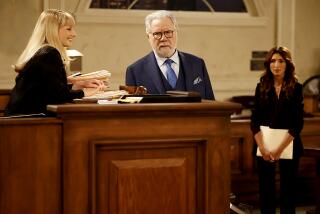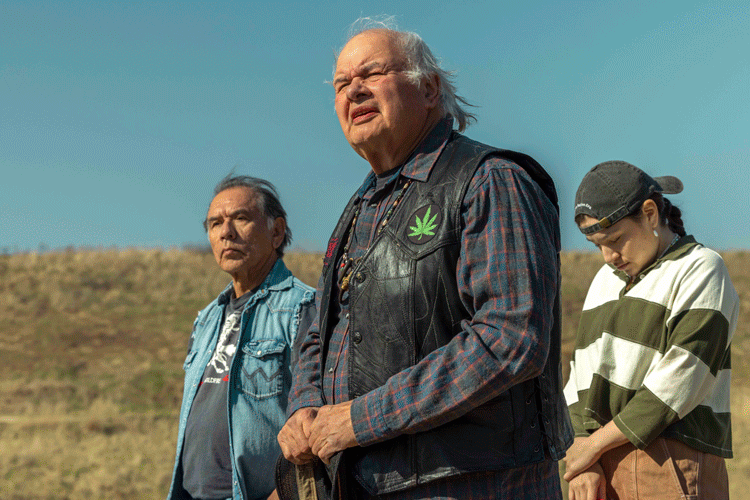SHOWS FOR YOUNGSTERS AND THEIR PARENTS TOO : It may be Court TV for juveniles, but this ‘Justice’ is for all
- Share via
While shooting a documentary on jury trials in Austin, Tex. last year, executive producer Steve Herzberg met Judge Eric Andel, who invited him to sit in on court proceedings. There, “he saw something that needed to be said,” Andel recalls from his Austin courthouse.
The result is Juvenile Justice, airing weekdays at 5:30 p.m. on KCAL and 3 p.m. on KNSD. The glimpse into one of the 2,500 juvenile courts in the country may help demystify the juvenile justice system.
“It’s a watershed year for juvenile court,” Herzberg says from his West Los Angeles office. “The problem of juvenile crime is on everyone’s lips. It’s an issue that’s been on magazine covers and in the headlines. Few understand the nature of the juvenile court system. There’s even been talk of abolishing the juvenile courts or lowering the age of adult responsibility, treating kids like grown-ups.”
But, Andel says, the offenders who come before his court are not grown-ups. Many problems, he believes, stem from dysfunctional families, gang-dominated neighborhoods and peer pressure. The course of the future can be altered, he says, if kids see they actually can have a future.
“Above all, I want them to see the advantage of an education, the value to an education, let them know there is more beyond their current situations,” he says of those who come before his court, most of whom are truants.
“We deal with kids 10 to 16 who have broken the law, and this is where they hear their rights and face their sentences,” Andel explains. “This is where they get their justice.”
The most common sentence, Andel says, is “probation and home.” The kids often are put back into their homes if they’ve run away after committing crimes.
The most common offenses before his court, Andel says, are “more often than not, truancy, assault, kids hitting kids, stealing cars, burglarizing cars or buildings.” But the real crime, as he sees it, “is the disintegration of families.” Of the approximately 250 cases tried on camera, fewer than 10 came from two-parent households, Herzberg says.
(Since the law prohibits public release of names and faces of those appearing before juvenile court, the youngsters who are seen on the daily show have waived those rights by signing, as Herzberg describes them, “very simple, easy-to-understand contracts waiving their rights to privacy.” Herzberg estimates that 77% of those in court agree to be seen on camera. The contracts are signed by both the minors and the legal guardian attending court with them.)
“If I had a magic wand,” Andel says, “my one wish would be a stronger--and this is not reality, I know--parental model that involves supervision ... the kids and their activities.” A strong supporter of supervised, afterschool functions, Andel says, “We need to cut down the pool of kids who invariably end up in gangs so that they don’t have any recruits, because we’ve provided kids with things that they want to be doing.”
“Eric reaches out to children,” Herzberg says of Andel. “It’s not really like going to a judge. He’s stern but compassionate and never raises his voice to them. It’s always fair and balanced.”
“Juvenile Justice” airs weekdays at 5:30 p.m. on KCAL and 3 p.m. on KNSD. For ages 8 and up.
More Family Shows
Disney offers a new twist on a classic fairy tale with Goldilocks and the Three Bears Sing Their Little Bitty Hearts Out (Sunday 11:30 a.m. Disney Channel). The story, which combines stop-motion animation and traditional cel animation segments, opens as Mother Goose reads the story to her gosling, whose imagination spins her own version. Instead of Goldie running away from the bears after she’s slept in the beds and eaten the porridge, she sings for help. The Three Bears love her singing so much, they join in, become famous TV performers and live happily ever after. For ages 2 to 8.
More to Read
The complete guide to home viewing
Get Screen Gab for everything about the TV shows and streaming movies everyone’s talking about.
You may occasionally receive promotional content from the Los Angeles Times.






